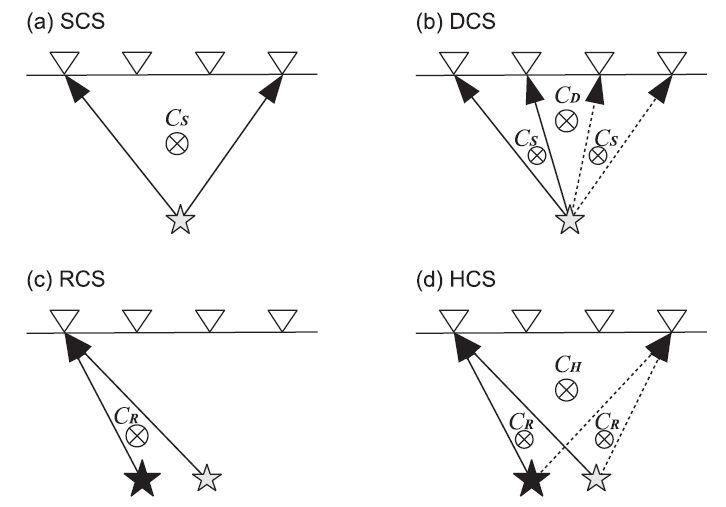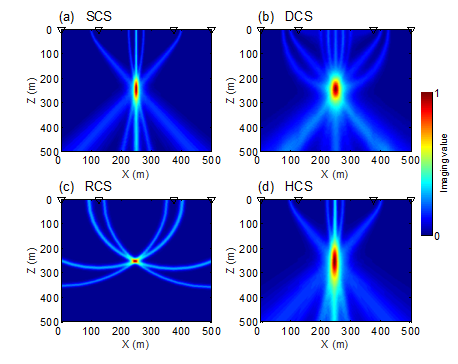The seismic source location problem is encountered at different scales and applications in seismology, such as tremor and earthquake location, microseismic monitoring in geothermal, oil and gas reservoirs, and rock burst monitoring in mines and tunnels.
Waveform-based seismic location methods can reliably and automatically image weak seismic sources. Besides the classical diffraction stacking operator which is based on the one-way traveltime, correlation-based imaging methods are another subcategory of waveform-based methods using differential traveltime.
After systematically analyze existing correlation-based methods, including single correlation stacking (SCS), double correlation stacking (DCS), and relative correlation stacking (RCS), researcher LI Lei from the Institute of Acoustics of the Chinese Academy of Sciences, together with researchers from both China and Germany, propose a novel hybrid correlation stacking (HCS) method, which proves to be a reliable and efficient approach for seismic location, particularly in case of a less reliable velocity model.
In this new approach, the double differential traveltime from an event pair (i.e. a master event and a target event) to a receiver pair is used to stack the corresponding double correlation waveforms. Figure 1 shows the schematic diagrams of the four correlation-based seismic location methods.

Figure 1. Schematic diagrams of the correlation-based methods: (a) SCS; (b) DCS; (c) RCS; (d) HCS. The reverse triangles are receivers, grey stars are target events and black stars are master events. The summing junction symbol denotes cross-correlation operation. (Image by LI Lei)
Researchers conduct a thorough analysis of imaging operators above by using synthetic and field data examples, revealing characteristic differences in imaging resolution and level of redundancy of these methods. Figure 2 shows their basic 2D imaging patterns when only four receivers considered.

Figure 2. Imaging results of the correlation-based methods: (a) SCS; (b) DCS; (c) RCS; (d) HCS. The reverse triangles are receivers. The positions with highest imaging values denote the source locations. (Image by LI Lei)
For SCS and HCS, their imaging patterns correspond to hyperbolae intersections in 2-D scenario. For RCS, circular arcs intersections are presented in the imaging profile. For DCS, there are hyperbolae intersections and more redundancy.
For general 3-D models with more receivers, deformed hyperboloids and spherical surfaces intersections with highly focused source energy will be present in the final imaging profiles.
Researchers point out that a moderate level of redundancy can ensure both accuracy and stability of correlation-based imaging methods, while an extremely high or low level of redundancy will hinder their performance in locating weak seismic events.
Furthermore, researchers summarize these correlation-based methods using a unified formula and demonstrate their generalized relationship by approximation with the beamforming algorithm.
This research was supported by National Natural Science Foundation of China (No. 11374322 and 11574347). China Scholarship Council (CSC) has partially funded this work. The work of Dirk Becker was funded by the BMBF ‘Geotechnologien’ project SIMULTAN (Grant No. BMBF03G0843B).
Reference:
LI Lei, BECKER Dirk, CHEN Hao, WANG Xiuming, GAJEWSKI Dirk. A Systematic Analysis of Correlation-Based Seismic Location Methods. Geophysical Journal International(Volume 212, January 2018, Pages 659–678). DOI: 10.1093/gji/ggx436.
Contact:
WANG Rongquan
Institute of Acoustics, Chinese Academy of Sciences, 100190 Beijing, China
Email: wangrongquan@mail.ioa.ac.cn


